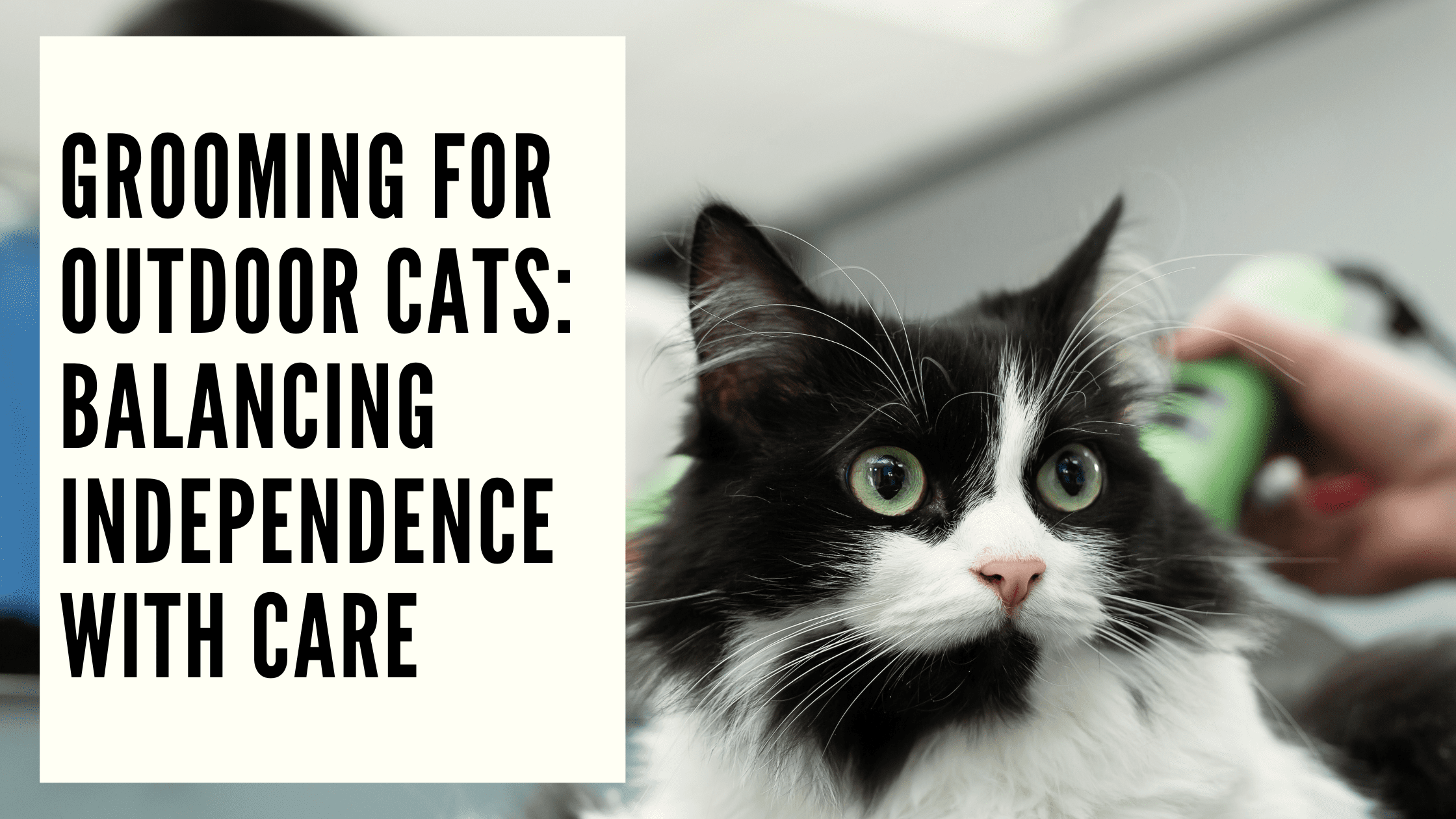Grooming for Outdoor Cats: Balancing Independence with Care
Outdoor cats are a special breed of feline companions. They embody independence and the spirit of adventure, relishing the freedom to explore the world outside. However, alongside their carefree lifestyle comes the responsibility of ensuring their well-being through proper grooming. In this extensive guide, we will delve deep into the world of grooming outdoor cats, striking a harmonious balance between their independent nature and the care they require.
Understanding the Nature of Outdoor Cats
Before we embark on the journey of grooming outdoor cats, it is essential to comprehend their unique nature. Unlike their indoor counterparts, outdoor cats are not confined to the four walls of a home. They thrive on the ability to roam, hunt, and soak up the sun’s warmth. Their independence is both a blessing and a challenge when it comes to grooming.
The Significance of Grooming
Grooming plays a pivotal role in a cat’s life, irrespective of their indoor or outdoor lifestyle. It is the key to maintaining their hygiene, preventing the formation of painful fur mats, reducing excessive shedding, and fostering a stronger bond between you and your furry companion. For outdoor cats, grooming becomes even more critical due to their exposure to the elements and potential encounters with pests.
Grooming Essentials for Outdoor Cats
Now, let’s explore the comprehensive grooming essentials that every outdoor cat owner should be well-versed in:
1. Regular Brushing
Regular brushing is the cornerstone of outdoor cat grooming. It serves multiple purposes, including:
- Dirt and Debris Removal: Outdoor adventures often result in dirt and debris accumulating in your cat’s fur. Brushing helps remove these unwanted elements, keeping your cat clean and comfortable.
- Matting Prevention: Long-haired outdoor cats are particularly susceptible to fur matting. Brushing regularly prevents the formation of mats, which can be painful and lead to skin issues.
- Reducing Shedding: Cats naturally shed their fur, but outdoor cats may shed more due to temperature changes. Regular brushing minimizes shedding, keeping your home cleaner.
Ensure you choose a brush suitable for your cat’s specific coat type and make brushing sessions a part of your routine.
2. Bathing when Necessary
Outdoor cats may occasionally require baths, especially if they find themselves in messy situations or become heavily soiled. Here are some tips for successful cat bathing:
- Use Cat-Friendly Shampoo: Human shampoos can be harsh on feline skin. Opt for a cat-specific shampoo, preferably one recommended by your veterinarian.
- Right Water Temperature: Ensure the water is at a comfortable temperature, neither too hot nor too cold. Cats are sensitive to temperature changes.
- Thorough Drying: After the bath, dry your cat thoroughly using a towel or a hairdryer on a low, cool setting to prevent chilling.
3. Flea and Tick Control
Outdoor cats are more exposed to fleas and ticks due to their outdoor escapades. Implement a robust flea and tick control regimen:
- Consult Your Vet: Seek your veterinarian’s advice on the best products for your cat’s situation. They can recommend spot-on treatments, collars, or oral medications.
- Regular Checks: Perform regular checks of your cat’s fur for signs of fleas or ticks. Promptly remove any you find.
4. Nail Trimming
Outdoor cats naturally wear down their nails through climbing and scratching. However, it’s vital to monitor their nail length and trim them when necessary. Overgrown nails can cause discomfort and lead to injury.
5. Dental Care
Don’t overlook your cat’s oral health. Outdoor cats may be at a higher risk of dental issues due to their diet and lifestyle. Consider these dental care practices:
- Brush Their Teeth: While not all cats may tolerate this, brushing their teeth regularly can prevent dental problems.
- Dental Treats and Toys: Provide dental treats and toys designed to help maintain their dental hygiene.
Balancing Independence and Care
One of the most significant challenges in grooming outdoor cats is respecting their independence. These cats are used to being in charge of their own grooming routines, which may differ significantly from what you have in mind. Here’s how to strike that delicate balance:
- Patience and Gentleness: Be patient and gentle when introducing grooming sessions. Let your cat come to you for these sessions, and reward them with treats and affection to create positive associations.
- Respect Their Boundaries: Pay attention to your cat’s cues. If they become agitated or uncomfortable during grooming, respect their boundaries and give them space.
- Gradual Progress: If your cat is not used to grooming, start with short sessions and gradually increase the time as they become more accustomed to it.
Conclusion
Grooming outdoor cats is both a rewarding and challenging endeavor. Understanding their independent nature and providing the care they need are essential for their overall well-being. By following the grooming essentials and respecting their independence, you can ensure that your outdoor cat continues to thrive in the great outdoors while remaining healthy and content.
FAQs (Frequently Asked Questions)
1. How often should I brush my outdoor cat?
Brushing your outdoor cat a few times a week is recommended, but the frequency may vary depending on their coat type and shedding.
2. Can I use human shampoo on my outdoor cat?
No, human shampoo is not suitable for cats. Always use a cat-specific shampoo recommended by your veterinarian.
3. Are outdoor cats more prone to diseases?
Outdoor cats are exposed to more potential risks, so it’s crucial to keep up with their vaccinations and regular check-ups to prevent diseases.
4. Should I keep my outdoor cat indoors during bad weather?
Providing shelter for your cat during extreme weather conditions is a good idea, but some outdoor cats are accustomed to these conditions.
5. How can I prevent my outdoor cat from getting lost?
Consider using a collar with an ID tag and a microchip for identification. Additionally, provide a safe and secure outdoor environment to minimize the risk of getting lost.
